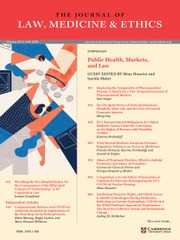- English
- Français
Article contents
An Appraisal of Abortion Laws in Southern Africa from a Reproductive Health Rights Perspective
Published online by Cambridge University Press: 01 January 2021
Extract
The World Conference on Human Rights (the Vienna Conference) that was held in Vienna in 1993, marked an important beginning in the recognition of reproductive and sexual rights as human rights. Among other goals, the Vienna Conference sought to end gender discrimination in all its manifestations; gender-based violence, sexual harassment, and sexual exploitation. However, the turning point for the development of reproductive and sexual rights was the consensus that emanated from the International Conference on Population and Development held in Cairo in 1994 (the Cairo Conference), and the Fourth World Conference on Women in held in Beijing 1995 (the Beijing Conference) as evidenced by the programs for action that were adopted.
The Cairo Conference defined reproductive health as “a state of complete physical, mental and social well-being and not merely the absence of infirmity, in all matters relating to the reproductive system and to its functions and processes.”
Information
- Type
- Symposium
- Information
- Copyright
- Copyright © American Society of Law, Medicine and Ethics 2004

